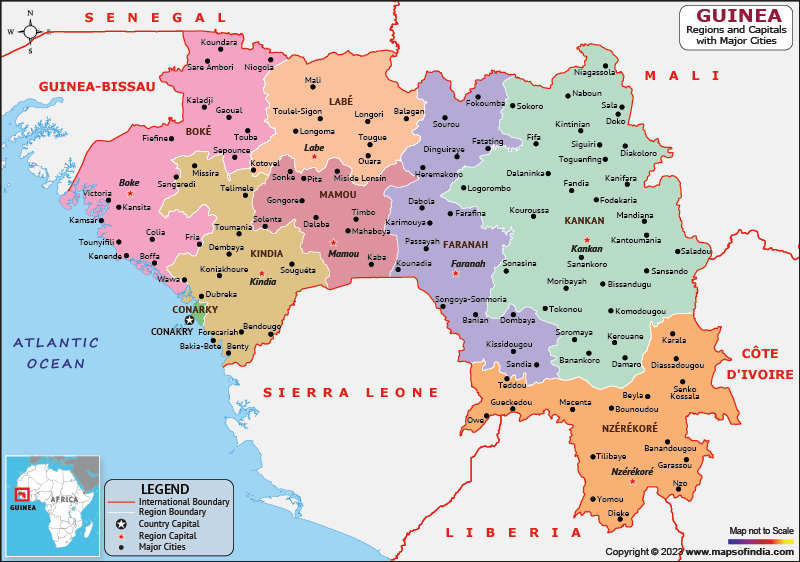Guinea, officially known as the Republic of Guinea, is a West African country that shares borders with Ivory Coast, Liberia, Guinea-Bissau, Senegal, Mali, and Sierra Leone. It is known for its rich cultural heritage, diverse wildlife, and scenic landscapes.
History
Guinea has a long and complex history, with evidence of human settlement dating back to at least 1400 BCE. The region was home to a number of different kingdoms and empires, including the Mali Empire and the Songhai Empire, before falling under French colonial rule in the late 19th century.
After gaining independence in 1958, Guinea experienced periods of political instability and authoritarian rule. In 2010, Alpha Conde was elected as the country's first democratically elected president, and the country has since made progress in terms of political stability and economic growth.
Culture
Guinea has a rich and diverse culture, with over 24 ethnic groups that each have their own unique traditions and customs. The country is known for its music and dance, with the balafon, kora, and djembe being some of the most popular instruments. The country's traditional dress is also an important part of its culture, with brightly colored fabrics and patterns being a common sight.
One of the most famous cultural events in Guinea is the Festival of Masks, which takes place in the town of Dinguiraye every two years. During the festival, dancers wear elaborate masks and costumes and perform traditional dances to celebrate their cultural heritage.
Language
The majority language of the nation is French, which is used in government, education, and the media. However, many different languages are spoken in the country, including Fula, Malinke, and Susu. In addition, many Guineans speak multiple languages, and it is common to hear people switching between languages in conversation.
Geography
Guinea is situated in the Western portion of Africa and is bordered by six other countries. The country has a diverse landscape that includes coastal plains, forests, and mountain ranges. One of the most famous natural features of Guinea is Mount Nimba, which is a UNESCO World Heritage site and is home to a variety of rare plant and animal species.
| Official Name | Republic of Guinea |
| Capital | Conakry |
| Population | 13237832 |
| Area | 245,857 km2 |
| Currency | Guinean Franc |
| Religion | Islam |
| Language | French |
| Major Cities | Gueckedou, Siguiri, Labe |
FAQs
Q1: What is the population of Guinea?
The population of Guinea is estimated to be around 13.5 million people. The country has a relatively young population, with a median age of 19 years.
Q2: What is the economy of Guinea like?
Guinea's economy is largely driven by agriculture and mining, with bauxite being the country's main export. The country also has significant reserves of gold, diamonds, and other minerals.
Q3: What is the climate like in Guinea?
Guinea has a tropical climate, with temperatures ranging from 22 to 34 degrees Celsius throughout the year.
Q4: What are some of the popular tourist attractions in Guinea?
Guinea has a number of popular tourist attractions, including the Fouta Djallon mountain range, which offers stunning scenery and opportunities for hiking and trekking.
Last Updated on: April 27, 2023
